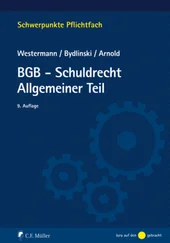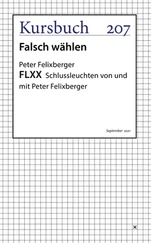It was warm, another of the details Atkins recalled from their descent nearly a week earlier.
“That heat’s one of the things that’s got me concerned,” Murray said. “A mine’s usually cool. Low sixties year-round. We’ve got readings in places nearly ninety degrees. This ground is really putting out the heat.”
Atkins still found that puzzling. His best guess was that heavy seismic activity at great depth was causing it. Rock strain generated heat, and in this case, the strain was still building, still putting out energy.
They stopped several times so that Booker could place explosive charges in the shaft. He kept unwinding the yellow fuse line from Neutron.
Atkins marveled at the robot’s ability to make the descent. The engineering was superb. The omnidirectional platform and unique tread system compensated instantly for sudden grade changes. The hydraulics automatically shifted the robot’s center of gravity. It was designed to descend a steep grade.
When they reached Level 15, Murray moved them back into the mine tunnel.
“How far down are we?” Elizabeth asked Murray.
“About fifteen hundred feet,” he said.
Except for a mild headache from the depth, she was holding up well, better than she’d expected. She quietly asked Atkins how he felt.
“Just like a walk in the country,” he said, forcing himself to smile. It was tough, but he hadn’t experienced any panic attacks, which was about as good as he could hope for. Having Elizabeth along helped him for a reason he hadn’t considered: she gave him something else to focus on.
They started through another maze of dark tunnels carved out of the coal seam. The rooms were interspersed with thick columns left in place to support the ceilings. The damaging effects of the earthquake were more apparent at this level. Parts of the roof and walls had caved in, leaving only narrow passageways. With every mild shake of the ground, more dust and rock fell.
It was getting warmer.
Murray called another halt to check his gas meter. He’d been doing this often.
“I’m reading about 4.2 percent methane,” he said. “That’s a hell of a jump since the last time.”
Looking up the dark tunnel, Atkins remembered what Murray had told them about sitting in the barrel of a shotgun.
GUY Thompson, resplendent in a broad-brimmed cowboy hat with an eagle feather in the brim, was monitoring an array of seismographs they’d set up around the periphery of the mine. The instruments were programmed to send signals to the red shack four miles away. The instruments would pick up the effects of the explosion, the intensity of the seismic waves it generated.
Thompson, who was at the red shack, had just gotten them online. The digital instruments indicated a pronounced increase in seismic activity.
“We’re getting a mag 3 or better every ten or twenty minutes,” Thompson told Steve Draper over the radio. “I’m thinking maybe we’re building up to something.”
President Ross and Draper felt most of the tremors, the alternating vertical movement and side-to-side swaying. So far, nothing serious.
Gunfire broke out again, more distant this time. Automatic weapons. Ross had been told that the 101st Airborne continued to run into pockets of resistance. The patrols were keeping the pressure on the rebellious National Guard troops and militia units still scattered in diminishing numbers throughout the surrounding hills. Remote, thickly forested, the country offered superb cover and the Kentucky soldiers were making the most of it.
The president’s Secret Service chief, Phil Belleau, kept pushing him to withdraw to the red shack. The position—it was on a hilltop—was more secure and easier to defend.
Ross refused. Two UH-60 helicopters were parked near the entrance to the mine, ready to fly him out at a moment’s notice. One was a backup in case the first was disabled. Both engines were kept idling, the crews on standby.
Ross was hardly aware of the shooting or the drone of helicopter gunships as they circled the hills, hunting for targets. He was engrossed, watching a strong-motion seismograph record the vibrations coming from the deep earth.
“See if you can get them on the radio,” Ross said. “Let’s find out how they’re doing.” He wanted to keep such calls to a minimum, afraid of distracting them.
Draper turned on the portable radio. There was a long burst of static before he got through to Atkins. “John, what’s your situation down there?” he asked.
“We’re starting to pick up some methane,” Atkins said.
“How bad?” Draper asked.
“Over four percent.”
That wasn’t good news. If methane reached high enough concentration levels, there was always the danger of spontaneous combustion and an explosion.
Listening to this exchange, Lauren Mitchell remembered how the Golden Orient was notorious for the deadly gas. There’d been at least three methane explosions before the big one that had killed her husband.
Spontaneous combustion.
Those two words were a miner’s curse.
The radio crackled again. “We’re approaching the skip shaft,” Atkins said. The long, steeply inclined tunnel had once housed the coal conveyor. “It shouldn’t be too much longer before we’re in position.”
Lauren Mitchell knew it was time to leave. She’d done everything she could and wanted to get away from this place. She missed her grandson. Her house was in the evacuation zone, but she’d made up her mind not to leave or let anyone run her off. If the worst happened, she wanted to be on familiar ground.
She also knew what could happen in the mine and didn’t want to be around to see it if it did.
She’d promised Murray she’d pray and had been praying steadily. But she knew what a 4-percent-and-climbing methane level meant. If it went too high, all the prayers in the world wouldn’t stop the explosion.
NEAR KALER, KENTUCKY
JANUARY 20
10:40 A.M.
THEY’D REACHED THE SKIP SHAFT. THE BELTED conveyor that once brought a black stream of coal to the surface had been dismantled, leaving a rough, steep tunnel that was narrower with less headroom than the air shaft. They had to walk in a stiff crouch, their hard hats often scraping against the roof. Even Neutron’s football helmet occasionally grazed the top of the shaft.
Following Murray, they descended another three hundred feet to Level 18. Slow going, it took nearly thirty minutes to cover the distance. They were as far down in the mine as they could go—eighteen hundred feet below the surface. Beyond that point, cave-ins had blocked both air shafts and the skip shaft.
Atkins checked his watch. They’d been underground a little more than ninety minutes. He was surprised. The time had seemed much shorter.
Murray took them another five hundred feet up the main tunnel on Level 18 to the base of the collapsed man shaft.
“Here’s what I was talking about,” he said, playing his spotlight on the gaping black hole where the elevator cage had once descended another two levels to the bottom of the mine. The earthquake had opened a crevasse that had swallowed the man shaft. A ragged hole about fifteen feet wide descended to depths unknown. Murray shined his powerful light on the jagged walls of the trench as Atkins and the others cautiously approached the edge and peered over. They couldn’t see the bottom.
“God knows how far down that goes,” Weston said.
Ever since they’d started their descent, Atkins had found Weston unusually subdued but had no complaints with his performance. He’d done whatever Murray asked without objection. So had Wren, who’d always been reasonably pleasant and cooperative.
“I tried this the last time,” Murray said. He picked up a hefty piece of rock and dropped it into the crevasse. They didn’t hear it hit bottom.
Читать дальше












